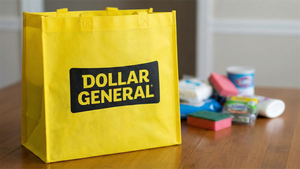DENVER, June 05, 2025 (GLOBE NEWSWIRE) -- The pace of merger and acquisition activity in the U.S. convenience store sector is accelerating with recent trends suggesting the nation’s c-store landscape is ripe for more change. While most of the transactions in 2024 involved smaller chains or single-store operators, several larger operators inked deals to significantly expand their footprints into new regions.
According to a new research brief from CoBank’s Knowledge Exchange, c-store consolidation stands to disproportionally affect rural communities, many of which lack a grocery store or access to major food delivery services. Convenience stores often fill an important need in rural areas, providing local access to food, grocery items, fuel and even household staples.
“Mass merchandisers like Walmart are unevenly spread among states through various regions of the country,” said Billy Roberts, food and beverage economist with CoBank. “Convenience stores are found in towns large or small. Food insecurity affects roughly 1 in 10 Americans and nearly 90% of U.S. counties with the highest rates of food insecurity are rural. Consequently, c-store consolidation trends can have a significant impact on food accessibility in rural areas.”
The convenience store market remains heavily fragmented and widely dispersed, which lends itself to additional consolidation. The U.S. had 152,396 convenience stores in 2024, a 1.5% year-over-year increase, according to data from the National Association of Convenience Stores. Only 22 c-store chains in the U.S. have more than 400 locations, while roughly 96,000 have 10 or fewer. The majority of the sector – 63% – is comprised of single-store operators. “The vast number of single-unit operators alone points to opportunities for larger chains to expand their relationships or acquire new properties to maximize efficiencies across supply chains and distribution networks,” Roberts added.
Acquisitions of smaller operators have been commonplace in recent years. Data from Capstone Partners indicates 80% of deals completed in 2023 were for target companies of less than 50 stores. Through September of 2024, 74% of the transactions involved smaller c-store entities.
However, several major moves involving some of the largest operators have occurred in recent years. Notable examples in 2023 include Maverik purchasing Kum & Go's 400 c-stores, RaceTrac's purchase of Gulf Oil and its 1,000 branded sites, and BP's $1.3 billion acquisition of TravelCenters of America.
Similar activity in 2024 was largely driven by major chains looking to expand their geographical footprint. FEMSA purchased 249-unit Delek US Holdings. Casey's acquired 198 CEFCO c-stores for $1.15 billion, pushing the chain to over 2,900 locations. And Sunoco sold 200 stores to 7-Eleven in a $1 billion deal.
The biggest potential deal that could shake up the market even further puts 7-Eleven’s 13,000 U.S. locations on the table, along with its market-leading position. While 7-Eleven recently announced plans to open 1,300 new stores in North America through 2030, it has been an acquisition target itself lately. Canada-based Alimentation Couche-Tard recently attempted to purchase 7-Eleven owner Seven & i Holdings for nearly $40 billion.
In a saga that began in August 2024, the Canadian c-store chain and 7-Eleven are reportedly working on a potential divestiture package to address regulatory concerns considered a major hurdle to the merger. Alimentation Touche-Card is well represented in the c-store sector with over 7,000 Circle K locations. Under a merger, the combined 7-Eleven/Circle K would be nearly 10 times the size of their next-closest competitor and own more than 13% of all c-stores in the US.
Roberts said regardless of how things play out with 7-Eleven, major acquisitions within the c-store space generally require significant capital expenditure investments. “Rebranding acquired units can demand upwards of $1 million per store, mostly for upgrading or building out kitchens to support foodservice aspirations. The evolution of c-stores as food destinations is playing a significant role in all these acquisition moves.”
Read the research brief, C-store M&A Activity Signals Consolidation Era.
About CoBank
CoBank is a cooperative bank serving vital industries across rural America. The bank provides loans, leases, export financing and other financial services to agribusinesses and rural power, water and communications providers in all 50 states. The bank also provides wholesale loans and other financial services to affiliated Farm Credit associations serving more than 78,000 farmers, ranchers and other rural borrowers in 23 states around the country. CoBank is a member of the Farm Credit System, a nationwide network of banks and retail lending associations chartered to support the borrowing needs of U.S. agriculture, rural infrastructure and rural communities. Headquartered outside Denver, Colorado, CoBank serves customers from regional banking centers across the U.S. and also maintains an international representative office in Singapore.

Corporate Communications CoBank 800-542-8072 news@cobank.com





